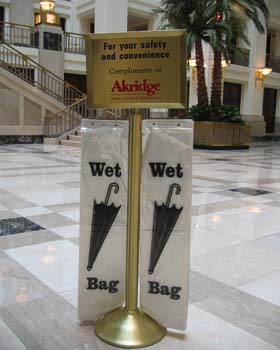
A woman’s role has changed dramatically over the past 60 years in society. Due to the fact that men were away fighting for their country, women were employed in sectors that were ‘men only’ roles in the war era. This role reversal no doubt had a catalytic effect on a woman’s place in society.
Females have been getting more and more powerful breaking into a culture that was previously ruled by men and with a change in morals, women are no longer seen as the stereotypical homemakers. Mothering, cleaning and washing are all being exchanged for power and new responsibilities with some men taking upon the new title ‘stay at home dad’. With more and more women following this ‘girl power’ trend, more pressures seem to be attached to this new lifestyle…
Becoming the ‘perfect’ woman is one of the biggest demands facing them today. With magazines flaunting the latest skinny celebrities and fad diets, our physical perception is under constant scrutiny – what we see now as normal would shock people 20 years ago. The size zero fad that is circulating us at the moment seems to be igniting the idea in women’s heads that this is what we should all look like. With 2 in 5 girls feeling worse about themselves after looking at pictures of models, actresses and singers, what is it that is poisoning the minds of these youngsters? Is it that they are more susceptible to influences than girls a few decades ago? From a very young age, girls are bombarded with what it is to be a ‘real’ woman and one of the areas that is greatly criticized is the role of Disney in young children’s lives.

Accused of stripping real events of character and substance and then replacing it with a purified format, critics claim that Disney removes all negative aspects to create a world of fantasy that we are all willing to escape to. Creating a ‘faultless’ world where men are strong and handsome and women have long, fluttering eyelashes and narrow hips that they can use to manipulate men, children struggle distinguish a difference between this false representation and the real world. One of the best examples of this is Snow White, a young, pretty and sweet natured girl who is upset and runs into a forest to escape. Stumbling across seven dwarf men she takes it upon herself the role of mothering and cleaning for them. Living a so called happy life things soon turn nasty and she needs a man to come and save her so that she can live happily ever after. Planting the seed in young girl’s minds that they need a man to always save them, studies conducted claim young girls feign and shriek that they are in trouble and need a man to save them, a result of Disney? When I was in a school play and I played Snow White how was I to know that the women I was really representing was a vulnerable woman in need of a hero? That wasn’t what I believed to be representing so maybe Disney isn’t as innocent as I thought…
With Disney being one of the most powerful companies in the world controlling what we watch, read and listen to, other companies are jumping onto the bandwagon and using advertising as a way of manipulation. Celebrity endorsed campaigns are big at the moment where the status of the celebrity is used to sell a product rather than allowing the product to speak for itself. With this comes complications and constant comparison is becoming a damaging factor for women who continually compare their bodies to that of the models used in these campaigns. You could argue that this is just another pressure of the modern women but this worshipping has had such a damaging effect on what women think is healthy and as a result having a detrimental effect on their health. A 19 year long study by Helen Sweeting highlighted the fact that ‘young girls had become the most depressed section of the population’, surely this should be one of the best times of their life? With girls are young as 10 being diagnosed with stress and an 80% increase of hospital admissions of teenagers over the last decade it is clear that these girls really are not happy!
Eating disorders, plastic surgery and plastering yourself in make up, are all the sorts of things that young girls are having viewable access to. Children are being allowed more access to television and Internet where they are able to view so much that previously wasn’t obtainable. Just looking through the Internet about the hardships of modern girls, my screen was filling with images of young girls facing a current battle with anorexia, I was actually so disturbed looking at the bodies of what these girls thought were healthy that I actually had to stop looking. Who really is to blame for this and why has it been progressively been getting worse? Social networking sites allow space for bullying if a girl is not ‘socially perfect’ and more access into gaining a greater view of what other girls look like. Forgetting that everybody is different these girls are trying to comply with the common trait of beauty. Even while you are on these sites, there are constant adverts at the side of the page with airbrushed models claiming that you can look just like them. What was once a place for girls to chat to friends is now becoming yet another area that can lead girls to believe they are ugly.

The advertising industry is also guilty of ‘sexing’ women up. With women stripping and appearing on the front of magazines semi naked, women feel empowered by this new freedom. This damaging effect has led many male and female teenagers to think that it is acceptable to hit a female and force her to have sex. Some women are now presenting themselves as willing participants and are sending the wrong messages that are being read as ‘gagging for it’. With emotion free sex being celebrated, some women feel the need to broadcast how many partners they have had and with celebrity role models who are supposed to be setting a good example publicly broadcasting their sex lives, we think that this is an acceptable thing to do too. Celebrities are becoming a more important part in society with young children looking more than ever to celebrities for guidance, but with the worrying figure that one in three girls look to Katie Price as their role model, it doesn’t say much about the future mothers. Eating disorders, excessive use of plastic surgery and wild binge drinking nights are all issues surrounding Katie Price - she is someone who personally I would not want my daughter to look up to!
More and more pressures are facing young girls now and one of these is their parent’s. With higher expectations now for girls to be successful they are facing a constant battle to perform to the high standards being set. Doing your best now just isn’t good enough and along with all the other problems young women are facing, their lives just feel like a constant battle. Feeling under appreciated these girls are turning to other methods to try and feel a little bit of happiness and rebelling is being accepted as part of growing up. With a rise of 50% of violent crimes being committed by girls and 21% of these reaching courts, these worrying figures suggest that these girls are making a desperate cry for help. When questioned about their violent behaviour, some girls replied they liked to show that they were strong (acting out against the Disney stereotype of women?) and that they saw it as a bit of fun. Fighting, drinking alcohol and even making up crimes are all becoming common hobbies for young girls now and the worrying thing is some don’t even seem to care!
Being a woman myself, I am staggered at just how much pressure there is out there to be perfect! Some of the things I have discussed have influenced me in the past but I have been lucky in the sense that both my parent’s are very level headed and haven’t allowed me to go off the rails. Supporting me in whatever I do, I have never felt pressurized like some of the girls that I read about and it’s a shame that they are not being allowed to live their lives the way the want. Opening my eyes to the influences that are out there, it is clear that young women are suffering and something needs to be done to help them. Before when I learned about the role of women in Disney, I thought it was nothing to worry about. With most children fondly remembering watching hours and hours of Disney at a given time, myself included, I did not see what the real worry was but now after delving into the topic a little further I realise that Disney is only one of the worrying factors that is having a detrimental effect on females.
With thanks:
http://kellebelle.files.wordpress.com/2009/09/vogue_june325348_1.jpg
http://www.takeonetheatre.com/images/snow-white-seven-dwarfs.jpg
http://farm1.static.flickr.com/29/62670667_e4ed7c2e7b.jpg
























































